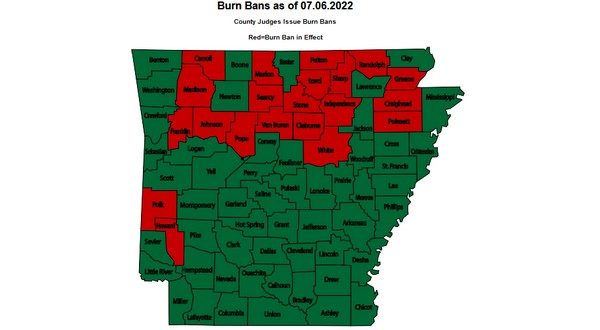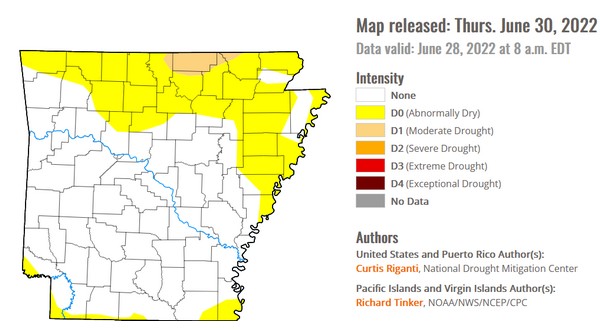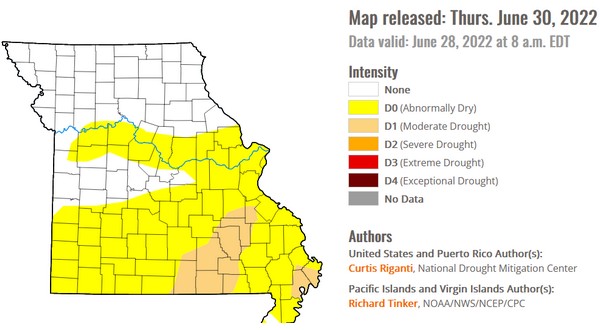
(Burn ban map for Arkansas)
As the summer heat and lack of rain continues, several counties in north central Arkansas have issued burn bans. Due to the dry conditions, burn bans have been issued in Marion, Fulton, Izard, Stone and Searcy counties along with the city of Salesville.

(Wildfire danger map from the Arkansas Forestry Commission)
A burn ban prohibits residents in the unincorporated areas of a county from doing any burning. Anyone caught burning while a burn ban is in effect can be fined or sentenced to jail time. Each county has their own ordinance. In Baxter County, the fine can be up to $500 for the first offense and up to $1,000 for each subsequent offense.
Baxter County is not one of the counties to issue a burn ban. County Judge Mickey Pendergrass says there are two important factors he has to consider before issuing a burn ban in Baxter County, including the impact it could have on the local economy.
Listen:
The Baxter County judge says another factor to consider when issuing a burn ban is how it affects the Baxter County Sheriff’s Office.
Listen:
Pendergrass says folks need to use common sense when conditions are as dry as they are currently in the Twin Lakes Area.
Listen:
County judges in Arkansas can issue burn bans for the unincorporated areas of their county. For cities, it’s up to the mayor to issue a burn ban.
The U.S. Drought Monitor shows all of north central Arkansas and southern Missouri to be abnormally dry. All of Fulton County, most of Howell County, the eastern part of Baxter County and extreme northern Izard County are all shown in the moderate drought category. The maps are updated each Thursday.

(U.S. Drought Monitor for Arkansas)

(U.S. Drough Monitor for Missouri)>/B>
Conditions have dried up quickly after an abnormally wet May. A total of 10.92 inches of rain fell in Mountain Home in May, making it the fifth wettest May in history. But in June, only 38 hundredths of an inch of rain was recorded, making it the third driest June in history.
WebReadyTM Powered by WireReady® NSI










